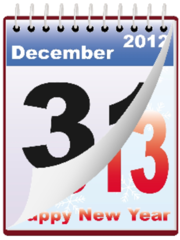I've been reading Jason Womack's book, "Your Best Just Got Better," on my Kindle for the past week or so. I just finished it and the verdict is in: It is so well done!

I met Jason a few years ago when he still worked for the David Allen Company, and have been impressed with his perspective from day one, particularly his ability to provide insightful suggestions to improve your skills no matter what your current situation.
Expand your perspective to improve your outcomes
This book is very interesting, practical, energizing and I highly recommend it. Throughout, Jason offers hands-on exercises to get you into a more active mode of driving your own future. I read the book cover-to-cover, but now I am planning to go back and conduct the exercises step-by-step (I skipped some exercises because I was on planes, or my energy / attention levels weren't where they needed to be) because I can see just how powerful they can be.
One pervasive theme throughout the book is to think beyond your "normal" perspective so you can stretch your goals, drive different and better effort, and get more assertive in pushing your life where you want it to go. For example, the book begins with an interesting visioning exercise called "Your Ideal Day," which gets you to begin imagining how things could be if you had a magic wand. If you want a taste of this, be sure and check out Jason's web site for a sample, along with a contest that goes through the end of 2012.
One of the things I like about Jason is that he uses a lot of models and constructs that make sense to me (I'm big on finding models that I can apply in different situations. For example, I like the I.D.E.A. model that shows up throughout the book:
I: Identify a very specific area you want to improve. Focus your attention on making the best better in one area of your life, and clarify what that will look like when you get there.
D: Develop strategies to engage in specific actions and techniques to direct your professional improvement and personal development. Acknowledge the process—remember, you’re just getting started! An important aspect is that the most sustainable changes people tend to make usually start small, are repeated with consistency, and often result in a payoff greater than anyone could have hoped.
E: Experiment by planning for and taking actions that generate bursts of momentum. Experimenting gives you the freedom to stop at any time to try something new. It also provides a more objective framework so that you can determine whether you should stop or continue moving forward. When you take actions to make your best better, it continues to get better.
A: Assess the value the effort has created. Here is the question I consistently ask myself, my friends, my family, even my clients: “Is what you’re doing worth the effort?”
Womack, Jason W. (2012-01-05). Your Best Just Got Better: Work Smarter, Think Bigger, Make More (p. 5). John Wiley and Sons. Kindle Edition.
Shape your own outcomes
Jason also provides some great advice in shaping the results you get in your life - one involves adjusting the words you use to create more positive, future-oriented results; the other involves taking inventory of the people you hang out with, and distancing yourself from those that have a negative or counter-productive influence on you. Truly great advice.
You'll find some familiar concepts (including some I've written about in the past, like time audits) and they're always presented with solid step-by-step methods to help you apply the concepts. For example, you'll find some great techniques for more effective "chunking" (aka time boxing) your day to get more out of each 15-minute block in your day. You'll also find good techniques to track how you're doing on your goals, as well as how well you're using your energy to get there.As someone who's always looking for ways to become more productive, I eat this stuff up.
This book is that it isn't just about getting more done, Jason also coaches you on methods you can use to make more money - that's something we can all use, particularly in this economy. And Jason's advice on how to build and leverage your network (business, social, etc) is excellent. Very cool.
A great book for "now"
Lately, I've noticed that a lot of people I know are taking hard looks at their lives - either to increase their success, make more money, or fig our out what's next for them. If that sounds like you, this book is perfect for you right now, and I encourage you to pick up a copy and get started going through the exercises.
If you aren't sure, or you want to get a feel for Jason's writing style, why not start with a free e-book from him called, "7 Keys To A More Productive Day," from Jason Womack's web site.
If you're convinced and ready to jump in, grab a copy of "Your Best Just Got Better," today. By the way - I think this book will be a great gift for some recent graduates I know, as well as great gifts this holiday season for some of my good friends.






